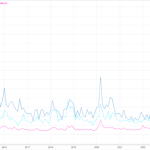The world of hemp-derived cannabinoids is evolving fast, with new compounds emerging regularly. Two of the latest to generate serious buzz are THC-A and THC-P. While they may sound similar, these cannabinoids offer very different experiences.
If you’re curious about which one might be a better fit for your lifestyle—whether for wellness support or intense effects—this comparison will guide you through their key differences in potency, benefits, usage, and more.
What Is THC-A?
THC-A (tetrahydrocannabinolic acid) is a naturally occurring cannabinoid found in raw cannabis. It’s best known as the precursor to Delta-9 THC. In its natural state, THC-A is non-psychoactive, meaning it won’t get you high unless it’s heated through a process called decarboxylation.
Because of this, many people turn to THCA Flower and other products for its potential therapeutic benefits, including inflammation support, appetite stimulation, and nausea relief—without the cognitive effects associated with THC.
What Is THC-P?
THC-P (tetrahydrocannabiphorol) is a more recently discovered cannabinoid, known for its extremely potent psychoactive effects. It has a much stronger binding affinity to CB1 receptors in the body—estimated to be up to 30 times greater than Delta-9 THC.
This means THC-P can deliver a more intense experience even in smaller doses, making it a popular choice among seasoned cannabis users looking for euphoria, relaxation, or creative stimulation.
THC-A vs THC-P: Key Differences Explained
Let’s break down the major distinctions that set these cannabinoids apart.
Potency and Psychoactive Effects
- THC-A is non-psychoactive until heated. In its raw form, it won’t cause a high.
- THC-P is highly psychoactive and known for delivering stronger effects than traditional THC.
Choose THC-A if you’re looking for wellness benefits without intoxication.
Choose THC-P if you want a powerful, euphoric experience.
Effects and Benefits
- THC-A may offer support for inflammation, pain, muscle spasms, and nausea. It’s often used by those who want the benefits of cannabis without the high.
- THC-P may offer deeper relaxation, pain relief, mood elevation, and sensory enhancement, though it may also come with side effects such as anxiety or dizziness in high doses.
Your goals—whether therapeutic or recreational—will help determine which cannabinoid suits you best.
Chemical Structure and Receptor Binding
- THC-A features a carboxylic acid group that keeps it non-psychoactive until heated.
- THC-P has a longer carbon side chain, allowing it to bind more effectively to the body’s cannabinoid receptors, especially CB1, which amplifies its effects.
These molecular differences explain why THC-P is more potent and THC-A is only active after decarboxylation.
How Are THC-A and THC-P Extracted?
THC-A Extraction
THC-A is found abundantly in fresh cannabis and must be kept raw to maintain its non-psychoactive form. When processed into THC-A diamonds, methods like flash chromatography are used to isolate and preserve its purity for use in edibles or vapes.
THC-P Extraction
Due to its minimal natural presence in cannabis, THC-P is usually synthesized from CBD through a process called isomerization, which alters the molecular structure in a lab to replicate the compound effectively and safely.
Best Ways to Use THC-A and THC-P
How to Use THC-A?
- Non-psychoactive methods: Add raw cannabis leaves to smoothies or salads, or use THC-A tinctures.
- To activate THC: Vape or smoke THC-A diamonds or disposables to convert it into Delta-9 THC.
How to Use THC-P?
- Vaping and dabbing: Fast-acting and ideal for strong effects.
- Gummies and tinctures: Long-lasting and easier to dose gradually.
Because of its potency, new users should start with very small doses of THC-P and adjust slowly.
Comparing the Benefits of THC-A vs THC-P
| Feature | THC-A | THC-P |
| Psychoactive? | No (unless heated) | Yes |
| Common Uses | Wellness, inflammation, nausea | Euphoria, stress relief, relaxation |
| Ideal For | Non-intoxicating support | Experienced users |
| Risk of Side Effects | Low | Moderate to high at higher doses |
Should You Choose THC-A or THC-P?
The decision ultimately depends on your needs, preferences, and experience level.
- THC-A is a great option for individuals seeking therapeutic effects without psychoactivity, making it suitable for daytime use or for people who want to stay clear-headed.
- THC-P is ideal for those who desire a strong psychoactive effect and are comfortable with THC products. It’s best reserved for more experienced users.
Whether you’re using cannabis for wellness or recreation, it’s essential to understand how these cannabinoids differ to choose the right one for your situation.
Where to Buy High-Quality THC-A and THC-P Products?
If you’re looking to try these cannabinoids yourself, make sure you’re purchasing from trusted retailers that offer third-party lab testing and transparent labeling.
Explore THC-A products like:
- Raw flower and pre-rolls
- Gummies and edibles
- Disposable vapes and carts
THC-P products are also widely available in:
- Disposable vape pens
- Potent gummies
- Tinctures and dabs
Brands like ELYXR offer carefully crafted cannabinoid products that prioritize safety, purity, and reliable effects—an ideal starting point for exploring both THC-A and THC-P.
Final Thoughts: THC-A vs THC-P
While THC-A and THC-P both come from the cannabis plant, they serve very different purposes.
- THC-A is perfect for users who want non-intoxicating benefits and may be exploring cannabis for wellness.
- THC-P is a powerful psychoactive compound better suited for recreational use or experienced individuals looking for deeper effects.
Whichever route you take, remember to start low, go slow, and always purchase from reputable sources to ensure safety and quality.














